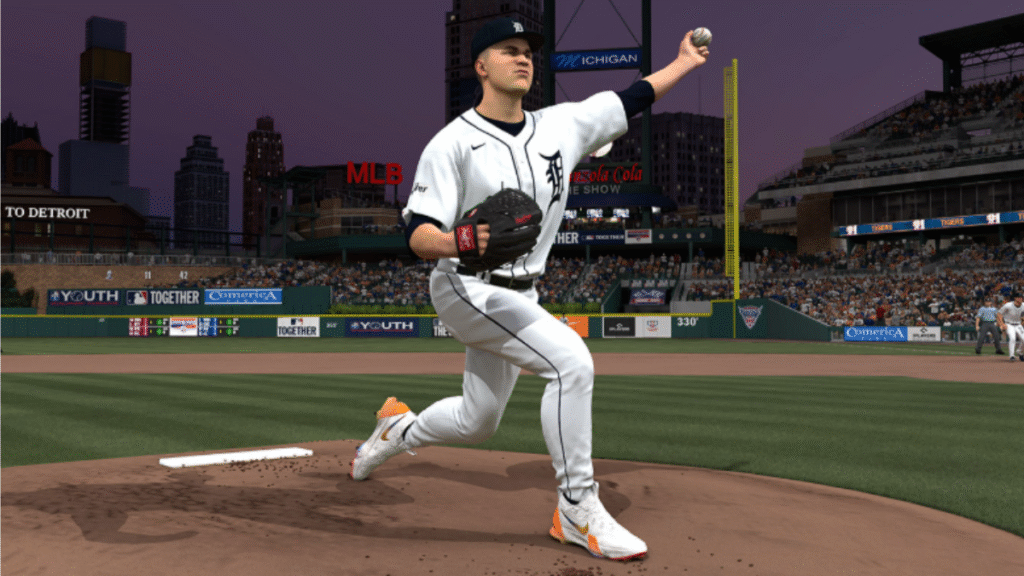Every serious player knows that crushing fastballs and timing breaking balls starts long before the pitcher winds up. Your success at the plate begins with something more fundamental—the batting stance you choose. While some folks treat stance selection like picking a jersey number, experienced players understand it’s one of the most critical decisions affecting your offensive production throughout your entire career mode journey.
The difference between a mediocre hitter and a feared slugger often comes down to comfort and confidence in the batter’s box. When your stance feels natural, everything else falls into place—your timing sharpens, pitch recognition improves, and suddenly those hanging curveballs become RBI opportunities instead of weak pop-ups.
The Psychology Behind Stance Selection
Here’s something most guides won’t tell you: your batting stance affects more than just mechanics. It impacts your mental game. When you step into the box with a stance that feels awkward or unnatural, you’re already at a disadvantage before the first pitch crosses the plate. Your brain is working overtime trying to compensate for uncomfortable positioning instead of focusing on the pitcher’s release point and ball rotation.
Professional players spend years developing stances that maximize their strengths while minimizing weaknesses. In MLB The Show 25, you get to skip that lengthy development process and adopt proven stances from the game’s greatest hitters. The key is finding which legendary approach matches your playing style and then fine-tuning it to perfection.
Switch-Hitting: Your Secret Weapon
Before we explore specific stances, let’s address the elephant in the dugout—handedness. Many players automatically default to right-handed or left-handed batting based on personal preference, but this approach leaves tremendous value on the table. Creating a switch-hitter gives you matchup flexibility that can’t be overstated.
Consider this: when you’re facing a dominant left-handed pitcher with a wicked slider, batting right-handed lets you see the ball breaking toward you rather than away. The reverse applies against righties. This platoon advantage has helped countless players dominate Diamond Dynasty modes and accumulate MLB The Show 25 Stubs through consistent offensive performance.
Switch-hitting also prepares you for the unpredictability of online competition. Your opponent can’t exploit favorable matchups when you’re equally dangerous from both sides. Plus, if you’re grinding through multiple game modes—Road to the Show, Franchise, March to October—you’ll naturally encounter situations requiring bats from both sides anyway.
Decoding Swing Mechanics: Why Two-Handed Style 6 Dominates
Once you’ve settled on handedness, the next crucial choice involves your actual swing animation. MLB The Show 25 offers numerous swing types, but one consistently rises above the competition: Two-Handed Style 6.
What makes this swing special isn’t flashiness—it’s efficiency. The bat path through the strike zone is nearly perfect, maximizing barrel contact with minimal wasted movement. The load phase feels intuitive, the swing itself has explosive bat speed, and the follow-through doesn’t interfere with tracking results. When you’re trying to build up resources or earn rewards that translate into MLB The Show 25 Stubs, consistency matters more than highlight-reel aesthetics.
This swing type excels across different hitting approaches. Contact hitters appreciate the quick, compact motion that helps slap singles into gaps. Power hitters love how the swing naturally generates leverage for extra-base hits. It’s versatile enough to succeed whether you’re protecting the plate with two strikes or sitting dead-red on a fastball.
Legendary Stances That Actually Deliver Results
The Griffey Jr. Formula
Ken Griffey Jr.’s stance represents perfection in simplicity. There’s nothing overcomplicated about it—feet properly positioned, hands held naturally, minimal pre-pitch movement. Yet this understated approach has helped countless players achieve batting consistency that seemed impossible with flashier alternatives.
Junior’s stance works because it doesn’t fight against your natural timing. The weight distribution remains balanced throughout the swing, allowing quick adjustments to different pitch locations. Whether you’re a gap-to-gap spray hitter or someone who likes pulling balls down the line, Griffey’s stance provides a neutral foundation that adapts to your approach.
Mike Trout’s Universal Appeal
There’s a reason Trout’s stance tops popularity charts year after year. It’s the Toyota Camry of batting stances—reliable, effective, and suitable for virtually everyone. The positioning doesn’t favor inside or outside pitches, high or low offerings. It’s a true all-around setup that lets your player attributes shine through without stance-based limitations.
For players building their Road to the Show careers or constructing Diamond Dynasty lineups, Trout’s stance offers a safe yet highly effective choice. You won’t find any glaring weaknesses, and the comfort level it provides helps new players develop timing more quickly than experimental alternatives.
Jeff Bagwell’s Unconventional Edge
Bagwell’s distinctive crouch isn’t just visually memorable—it’s strategically brilliant. That low stance shrinks your strike zone, forcing pitchers to throw with greater precision. Umpires calling balls and strikes don’t adjust expectations, meaning borderline pitches suddenly favor you instead of the pitcher.
The crouch also generates tremendous power through your legs and core. Despite appearing compact, Bagwell’s stance coils energy like a compressed spring. When you make solid contact, balls jump off the bat with surprising authority. Online opponents often underestimate Bagwell users, expecting slap-hitting singles instead of gap-penetrating doubles.
Yordan Alvarez’s Power Platform
Alvarez brings an upright, powerful presence to the plate. His bat positioning—elevated near the shoulder with elbows relatively level—creates natural loft in your swing path. This stance especially benefits players who struggle elevating balls or those looking to maximize home run potential in hitter-friendly ballparks.
What separates Alvarez’s stance is its customization potential. Smart players adjust the Forward Foot Offset settings, bringing both Z and X values down to zero. This modification extends your front foot and shifts weight backward, creating a powerful leg kick that adds velocity through the hitting zone. It’s like installing a turbocharger on an already powerful engine.
Freddie Freeman’s Pull-Side Dominance
Freeman’s left-handed stance is engineered for pulling balls with authority. The bat rests behind your head with the back elbow elevated, creating natural top-hand dominance. A subtle knee bend transfers weight properly, setting up powerful rotational force when you initiate your swing.
Right-handed players can certainly adopt Freeman’s stance, but it truly shines for lefties who love yanking inside fastballs or driving low breaking balls into the right-field gap. The stance feels aggressive without being overcommitted, maintaining enough balance to handle outside pitches when necessary.
Chipper Jones: The Tall Hitter’s Paradise
Taller created players often struggle finding stances that don’t look awkward or feel mechanically clumsy. Chipper Jones solves this problem completely. His nearly upright stance with minimal movement provides a clean, professional look while delivering effective results.
Jones’s approach works brilliantly for switch-hitters specifically. As one of history’s greatest switch-hitters, his stance translates equally well from both boxes. There’s no adjustment period when you alternate sides—the same comfortable setup applies regardless of pitcher handedness. For players accumulating wins and rewards across different game modes, this consistency proves invaluable.
Mark McGwire’s Stable Foundation
McGwire’s wide stance might appear unusual initially, but don’t let first impressions fool you. That wide base creates exceptional stability, helping timing consistency even against pitchers with deceptive deliveries. You won’t find yourself off-balance chasing sliders in the dirt or overcommitting to changeups.
The simplicity of McGwire’s setup—wide feet, minimal movement, straightforward load—makes it surprisingly easy to master. There aren’t multiple moving parts to coordinate or complex timing windows requiring perfect synchronization. It’s especially effective for power hitters prioritizing solid contact over batting average, players who live for crushing mistakes into the seats.
Advanced Customization: Turning Good Stances Into Great Ones
MLB The Show 25’s customization depth allows transforming already-effective stances into personalized perfection. Understanding what each adjustment actually accomplishes separates competent hitters from truly elite offensive forces.
Hand Offset X directly impacts swing timing relative to pitch speed. If you consistently find yourself late on fastballs, lowering this value helps your swing trigger earlier. Conversely, if you’re perpetually out in front of breaking balls, raising the value delays your swing slightly. Think of it as a micro-timing adjustment that compensates for your natural reaction tendencies.
Hand Offset Y controls your sweet spot vertically. Lower values make low pitches easier to handle—perfect for players who love golfing low strikes into the outfield. Higher values improve high-pitch contact, helping players who sit fastball at the letters. Analyze where pitchers attack you most frequently and adjust accordingly.
Hand Rotation settings affect how your hands approach different pitch heights throughout your swing. These adjustments seem minor but significantly impact your ability to barrel pitches in specific zones. If you’re consistently fouling off knee-high fastballs or popping up belt-high curves, rotation settings likely need tweaking.
Back Elbow Offset fundamentally changes your swing philosophy. Lower values create quicker, more compact swings ideal for contact-focused approaches. You’ll hit more singles and doubles while reducing strikeouts. Higher values generate power swing characteristics—slower but more powerful, trading contact consistency for home run potential. Choose based on whether you prioritize batting average or slugging percentage.
Hip Offset adjustments influence both timing and plate coverage. These settings determine how efficiently you can handle pitches on different parts of the plate. If you dominate middle-in pitches but struggle away, hip offset modifications can help balance that coverage. Experiment systematically rather than making random changes.
Forward Foot Offset affects how you handle timing variations between different pitch types. A well-adjusted foot position helps you maintain proper weight transfer whether you’re swinging at a 98-mph fastball or a 78-mph curveball. This setting becomes crucial when facing pitchers with significant velocity differentials in their arsenal.
The Championship-Caliber Custom Setup
One customized configuration has developed legendary status within the MLB The Show community: the modified Shawn Green stance. This setup requires precise adjustments but rewards players with exceptional results across all hitting scenarios.
Begin with Hand Offset X at 48, Y at 70, and Z at 61—these create optimal balance between timing and pitch coverage. Set Hand Rotation to 60 and Hand Waggle Rotation to 80 for controlled power generation. Keep both Back Elbow and Front Elbow Offsets at 50 for natural balance that doesn’t favor contact or power excessively.
Configure Hip Offset X to 77, Y to 65, and Z to 48 for ideal weight distribution. Finally, set Forward Foot Offset Z to 48 and X to 33, controlling your tendencies to pull or push balls during contact. This combination has helped countless players elevate their offensive games regardless of skill level.
Maximizing Your Investment Through Smart Resource Management
Building championship-caliber teams in Diamond Dynasty or creating dominant Road to the Show players requires more than just skill—it demands smart resource allocation. While grinding games naturally accumulates currency, savvy players explore efficient methods for acquiring necessary resources.
Platforms like lootbar.gg have established strong reputations for providing reliable access to in-game currency and resources. For players focused on building competitive rosters without endless grinding, these services offer convenient alternatives that respect your time investment. The platform’s positive reviews and player satisfaction ratings demonstrate its commitment to quality service.
Whether you’re acquiring new player cards, upgrading equipment, or accessing special packs, having sufficient resources accelerates your progress significantly. The difference between settling for adequate players and fielding elite talent often comes down to resource availability. Making smart decisions about how you acquire MLB The Show 25 Stubs directly impacts your team’s competitiveness and your enjoyment of the game.
Finding Your Perfect Batting Identity
Ultimate success in MLB The Show 25 requires experimentation and self-awareness. What works brilliantly for your friend might feel completely wrong for you. Spend meaningful time in practice mode testing different stances against various pitch types, speeds, and locations. Pay attention not just to results but to how each stance feels.
Don’t rush the process. Great hitters in real baseball take years perfecting their approaches—you can afford spending a few practice sessions finding yours. Try each recommended stance for at least 25-30 at-bats before making judgments. Some stances reveal their strengths slowly, requiring adjustment periods before everything clicks.
Track your results systematically. Which stance produces your highest batting average? Which generates the most extra-base hits? Which feels most comfortable during high-pressure at-bats? These questions help identify your optimal setup objectively rather than relying on gut feelings that might mislead you.







